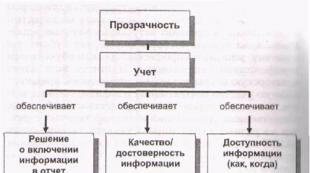How to tame a parrot. The easiest way to tame a budgerigar to the hands of the owner if he is afraid - all the nuances of the process How to tame a parrot if he is afraid of hands
Andrey Belousov
One of the most popular feathered pets is budgies. These curious and very sociable creatures are able to conquer anyone, even an ardent opponent of pets. With the appearance of a parrot, the house is filled with joy and the sonorous chirping of these bright, cheerful birds.
Young children are especially happy about a new pet, but the joy fades a little when it turns out that it will take at least a month to make closer friends with the new pet, because the bird needs time for it to begin to trust you and communicate calmly, without feeling a danger to its life.
And here the question arises, how to tame a parrot and how long will it take?
Getting used to new living conditions
No matter how soon we would like to enjoy close communication with a bird, it will take more than one week to tame a parrot. Despite the fact that these birds are very sociable and inquisitive, they are also very careful!
But sooner or later, even the most distrustful and stubborn parrot will get tired of sitting in its cage and make contact. The most important thing is to do everything gradually, without haste and according to the rules.
The most important rule for training budgies is patience. You should not hope that the bird will immediately begin to sit on your hand and feel calm about it. For a parrot, like for any other bird, being in a person's hand is a lot of stress. At first, the bird is afraid of hands and, in general, any active movements near its shelter-cage.
It’s not difficult to train a small bird to sit on your hand; the most important thing is to do it gradually, following the following rules:
- When you bring your bird home from the pet store, give it time to get used to everything new that surrounds it. Leave the parrot alone for a couple of hours with itself and the new room, let it take a good look at everything in solitude and silence;
- You need to place the cage in such a place that it is convenient for you to approach it, and the parrot can see what is happening around it and who exactly is approaching it;
- From time to time it is necessary to approach the cage with the pet, talk to it gently and calmly, and repeat its name;
- All movements during cleaning the cage, changing water, and replenishing food supplies should be slow and smooth.
Don’t expect the parrot to get used to you in a couple of days, be patient and everything will work out.
The main sign that the parrot is already accustomed to life in a new place and to you is a calm meal in the presence of the owner. As soon as the bird does not pay any attention to your approach to the cage and continues or begins to eat, you can move on to the next stage of taming.
Hand Taming

How to train a budgie to sit on your hand? You need to start the process of taming by hand by offering your pet treats through the bars of the cage. The first time, the parrot will most likely refuse the offered goodies out of caution.
Don't despair; you need to try again the next day. Sooner or later curiosity will take over and the bird will give up. And don’t forget to talk to your pet at this time, calling him affectionately by name.
Once your parrot has started eating treats through the bars, you can try hand-feeding him in the cage. It is better to do this in the morning, when the pet is hungry. The treat must be held out, first holding it with your fingers, while holding your hand palm up, then on your open palm. Some time will pass, he will get used to it and will willingly feast on your hands.
Then you can begin to teach the bird to sit on your finger. To do this, you need to carefully put your hand into the cage with your index finger extended and place it towards the perch on which it sits. Usually parrots quickly understand what they want from them and boldly climb onto the finger.
If the bird cannot understand what to do, lightly touch its tummy between its legs, and it will willingly move onto your finger.
Refusal to make contact: what to do?
Usually the taming process takes three weeks, but sometimes there are particularly stubborn individuals that refuse to make contact. How to tame a parrot in this case? The most important thing in this case is to be patient and not despair.
Even the most unsociable and cautious budgies cannot live without communication, so sooner or later he will give up. You will definitely tame him, it will just take a little longer.
If the bird categorically refuses to pay attention to the offered treat, you can go the other way - try to interest him in the toy. 95% of parrots love to look in the mirror and feed their imaginary “friend” or “girlfriend”.
It is this weakness of the pet that needs to be taken advantage of to tame it. Try to slowly insert your hand into the cage with the small mirror. This must be done very carefully so as not to lose the pet’s trust, otherwise everything will need to start all over again.
Very often, parrot owners complain that their pet is afraid to sit in their arms. That is, on the shoulder or head - with pleasure, but on the palm it just doesn’t work. What to do? How to tame a budgie? Now we'll find out. We warn you right away - the process is long, but effective. The main thing is not to force things. And then everything will work out for you.
For the first time in first class!
We bought a bird, brought it home, and put it in a cage. What do most new owners do? Right. They begin to poke their playful paws inside, trying to stroke the parrot. What remains for the pet? Just frantically beat against the bars and scream heart-rendingly. Because he was not hatched by hand. He is still quite a wild and willful bird.
How to do it right? First you need to ask the seller what the parrot was fed. Pour the usual food into the feeder, pour water, and carefully release the bird into the cage. And you forget for a day. Let the parrot get used to the new environment, look around, and get comfortable.
The next day you can move on to a new stage.
Advice. Start talking to your budgie from day one. Preferably in an even, calm voice. Let him slowly get used to it.
Sit next to me
Don't rush to put your hands in the cage. A pet may be so afraid of hands that it will never become tamed to them. Your actions are as follows:
- calmly approached the cage
- don't stop talking to the bird
- sit nearby so that the bird can see you
- and just sit
During this time, you can do crafts or read aloud. Often a couple of evenings are enough for the budgie not to worry when you approach. Which means it’s time for the next move.
Give me your hand...
The budgie has already become accustomed to your presence. Now approach the cage and slowly open the door. And carefully put your hand inside. Do not shake your palm or make sudden movements. Just keep her in the cage for a while.At first, the parrot will be noticeably nervous, perhaps even scream loudly and try to fly away. Don't remove your hand immediately. Try talking to him like before. Let him make a little noise, maybe he'll calm down.
Repeat the procedure for several days in a row. Until the wild bird begins to respond adequately to the hand in the cage. Just don’t try to pet or scratch your pet right now. Such movements will nullify your efforts, and you will have to start from the very beginning. The budgerigar is gradually tamed to the hands.
Loaf, loaf!
Most training methods are based on some kind of reward with some kind of treat. But taming is also a certain type of training. Therefore, the next step will be to offer our budgie a loaf of bread. Although no. It's probably better to choose his favorite grains. For example, many parrots simply adore millet. Especially in ears of corn.
Your actions:
- Remove absolutely all food from the feeder. Down to the smallest grain.
- After about 3-3.5 hours, approach the cage.
- You open the door.
- Take the treat in your hand and stick it inside.
- Do not make sudden movements.
- Wait.
As you remember, the proud birds are already accustomed to your hand. And then there's food! And still hungry! Usually, smart budgies sit on the owner’s palm within a minute and happily gobble up grains. The foolish ones sit dissatisfied on the sidelines until they faint in hunger.
While your pet is eating, you can try to lightly stroke it or scratch its back or tummy. In most cases, a couple of days are enough for the parrot to get used to eating from its owner's hands.
Call me with you…
The last stage is quite simple. But, it will only suit you if the cage is cramped and you will let your feathered friend fly. If you keep a bird in an aviary, you can stop at the previous point.
For those who will release the parrot, you need to do the following:
- As usual, we approached the cage.
- Talk to your pet, he is already used to it.
- We prepared a treat on the palm of our hand.
- The door was opened.
- Do not put your hand inside, but keep it at the very entrance.
The parrot must see the treat. He is already accustomed to eating from your palm. Therefore, if he is not a complete fool, he will quickly understand what is required of him. Naturally, he will jump out to taste the delicious food. To do this, he will have to sit on your hand again.
If you did everything correctly, then from now on you can consider that you have a completely tame budgerigar.
Extreme way
Some sources recommend an original method for taming a budgie. It is based on desperation. All that is required is to trim the bird’s flight feathers on its wings. The pet will not be able to fly and will simply have to sit in your arms.

But no one can guarantee that after the feathers grow back, the parrot will be tamed to the owner’s palms. Such violence is far from the best option. But there are people who use similar methods.
Extreme Method (Crash Course)
There is one recommendation that allows you to tame a budgie in just a few days. To do this, you need to put both palms into the cage at once and hold them there. Usually the pet quickly gets tired of fluttering in vain. He has no choice but to sit in his arms. There is nowhere else. Usually on the 4th day of such execution the parrot gets used to the hands.
But we strongly do not recommend this method. Because not every psyche can withstand such training. No doubt, the budgie will sit in your arms. But he will not stop being afraid of them. What kind of relationship is this if the pet trembles with fear at the sight of its owner?
Do not swing your arms over your pet's head. Nature has a reflex in it that a flicker from above is the shadow of a bird of prey. The parrot will forever form an association in the brain: hand - danger. It will be almost impossible to retrain him.
Later, when the bird gets absolutely used to your squeezing, it will be possible to wave his arms and make sudden movements. But during taming - taboo.
Don't expect the whole process to take a week. Some budgerigars are tamed only at one year of age. Others take even longer.
Don't even think about punishing your pet if it bites. And don't shout. Bites are a completely normal and natural reaction of any creature to an invasion of its personal space. Or from fear. Or this is how the pet defends itself. Let him bite, after all. A budgie is unlikely to chew off your finger. Just calm him down in a smooth voice without strong intonations. Or just step away for a while. Let the parrot come to his senses and feel that there is no threat or anger from you. Repeat the procedure a little later.Do not try to lure a proud bird with a tasty seed when it is just starting to fly out of the cage. And even more so, don’t even think about grabbing him if he wants to fly away. All hand taming is done so that the pet is not afraid of the owner's palms. And not for you to squeeze him.
Now you know how to tame a budgie. Try not to make mistakes, otherwise you will not be able to gain the full trust of your feathered friend. And for the rest of his short life, he will consider you an enemy.
Video: how to quickly tame a parrot
Content:
As you may have already seen somewhere, parrots can sit on people's hands or fingers. They are very smart birds, so you can train your parrot to be your friend. This article will tell you how to make your parrot a cute, sociable, hand-trained pet.
Steps
Part 1 Creating a comfortable environment
- 1 Provide a suitable environment. A good environment is important for your budgie's healthy life. Don't put your parrot in a dark, quiet room. Your parrot will be more comfortable in a room with bright lighting and activity.
- 2 Get your budgie to move from the box you moved him in to the cage that will be his new home.
- Open the cage and bring the box with the parrot to the door. Do not put your hand inside to remove the bird. She needs to get out on her own.
- Your patience is the key to getting the bird into the cage. If you shake the box and tilt it, you will simply scare the bird even more. This way she can get even more stuck in the box.
- Talk to the bird. If you talk to a bird, it will be interested in the sounds you make. She'll have to get out to see where they're coming from. Talk to her soothingly: “Everything is fine, this is your new home.”
- Wait and watch. When the bird is already on the edge of the box, all you can do is wait and watch. Do not shake the box and force the bird to come out. This will scare the bird and it may come back. Once returned to the box, the bird may not want to come out again.
- 3 Wait about a week before starting training. This will allow the bird to acclimatize to its new environment. The parrot must get used to your presence, must be familiar with you, since it is you who will give him food and refresh water every day. Sit down next to the cage every day and just talk as much as possible. The bird should get used to the sound of your voice.
Part 2 Beginning of training
- 1
Gain your pet's trust. On the first day of training, open the door and lower your hand to the bottom of the cage and let it lie there. Talk to the parrot. Read a book out loud or just chat about nothing.
- Don't move your hand. Remain still, but continue to speak in a soothing voice.
- Many parrots may rush around the cage and swear at you. However, remain still so that the bird knows that nothing bad will happen to it.
- 2 Continue this step daily, but gradually move deeper into the cage. Every day, move your hand a little further until you reach the perch. After a couple of days, the parrot should understand that your hand in the cage does not pose a threat and will treat it as an expected, everyday thing.
- 3
Move your hand towards the parrot. The bird will already know that the hand is not dangerous, but will be more likely to fly away and swear if you try to touch it. Progress may be slow; exercises must be repeated daily until the parrot gets used to it.
- When you are able to bring your hand close enough to the parrot to touch it, begin to place your finger on its feet.
Part 3 Subsequent training
- 1
The bird can respond either by flying away or by boldly stepping onto your finger. The first situation is more likely, but you must be persistent. Proceed to the next step when the parrot begins to sit on your finger without any discomfort.
- When your budgie sits on your finger, clearly say “sit” or something similar. Don't scare him. If you say the same thing every time you land your parrot on your finger, it will soon begin to sit on your finger on command.
- 2 Start moving your finger slowly. By now the bird will really trust you and should be comfortable with your finger moving. Spend time placing the parrot on your finger and moving it to another perch.
- 3
Take the parrot out of the cage (on your finger). Remember that he spent a long time in the cage and will be significantly frightened by this action. This may take several days.
- Keep windows and doors closed to prevent the bird from flying away.
- 4 Repeat the previous step until the bird is completely calm about it. Soon, removing the bird from its cage should not present any problems.
- 5 Start talking to the bird. Do this in a quiet, gentle voice. Do not make sudden movements or make loud noises.
- 6 Allow the bird to sit on other parts of your body: head, knees, shoulders, etc. You can teach it to sit anywhere, as long as you take your time so that the bird feels safe. Spend as much time as you need on this!
- Reward your parrot with treats. Don't forget to praise him for completing tasks correctly.
- Patience is the main strength in training a parrot. Take your time.
- When training your parrot, do not make sudden movements or make loud noises. You'll scare him.
- Let your parrot interact with people a lot so that he gets used to having a lot of people around him.
- Don't try to teach your bird more than one thing at a time, as it will be difficult for him to remember everything.
- Target a younger parrot. Young parrots learn better than older birds. But you can also buy an adult bird, but training it will take more time.
- Walk around the house with a parrot on your arm, shoulder, etc. This will allow him to study the situation.
- Calm music will help calm the bird.
- It is extremely difficult to train more than one bird at a time, if you have many parrots, keep them separated during training.
- Keep cats and dogs (if you have them) away from your parrot as they may frighten it.
Warnings
- Trimming a bird's flight feathers and claws may cause bleeding. Use cornstarch to stop the bleeding first, then contact your veterinarian. The bird may experience fatal bleeding.
- Taming a bird takes time, so be patient.
- Bites can be a problem. If this happens during training, this habit must be eradicated immediately.
- When walking around the house with a parrot, do not run or create discomfort for the bird.
- Do not rush the learning process, otherwise the bird will be under stress, which will complicate learning.
- If treated poorly, parrots can become very mischievous and unsocializable.
- If you have other pets (dogs, cats, ferrets, etc.), lock them up somewhere while you train with your parrot. All of the pets listed above are predators and can harm the bird.
- Never leave your bird in the sun, make sure it is not too hot or cold.
- If you have just a chick, then at the age of two months he can behave like a teenager. It may even make you want to get rid of it. This is why birds can end up in shelters. If your parrot starts to misbehave, don't be discouraged. Stay patient, he will soon outgrow this age.
Instructions
Place the cage with the parrot on a closet or special shelf at human height. You need your eyes and his to be at the same level upon contact. Each time you approach the cage, call the parrot affectionately and gently. After about a week, he adapts to the new place.
Accustom your parrot to your presence during feeding. To do this, every time the parrot eats, approach it carefully without sudden movements. At the beginning, he will react to your behavior extremely violently. You wait. Every day, reduce the distance between you. This stage may take up to two weeks.

Now train your parrot to eat food from your hands. To do this, stock up on his favorite treat and patience. Every time you hand him food through the bars of the grill on your fingers, gently call him by name. After some time, the parrot will get used to it and will come down to you from the perch. Only here will the bird show extreme caution. Having taken a gift from you for the first time, she will try to get away from you as quickly as possible. Don't bother her. Don't frighten your pet in any way.

Now is the time to open the cage and, holding out your hand with a treat, wait for the moment for the parrot to move onto it, carried away by eating the food. But don’t take your hand out of the cage. A parrot you have trained will most likely do this trick easily the first time.









